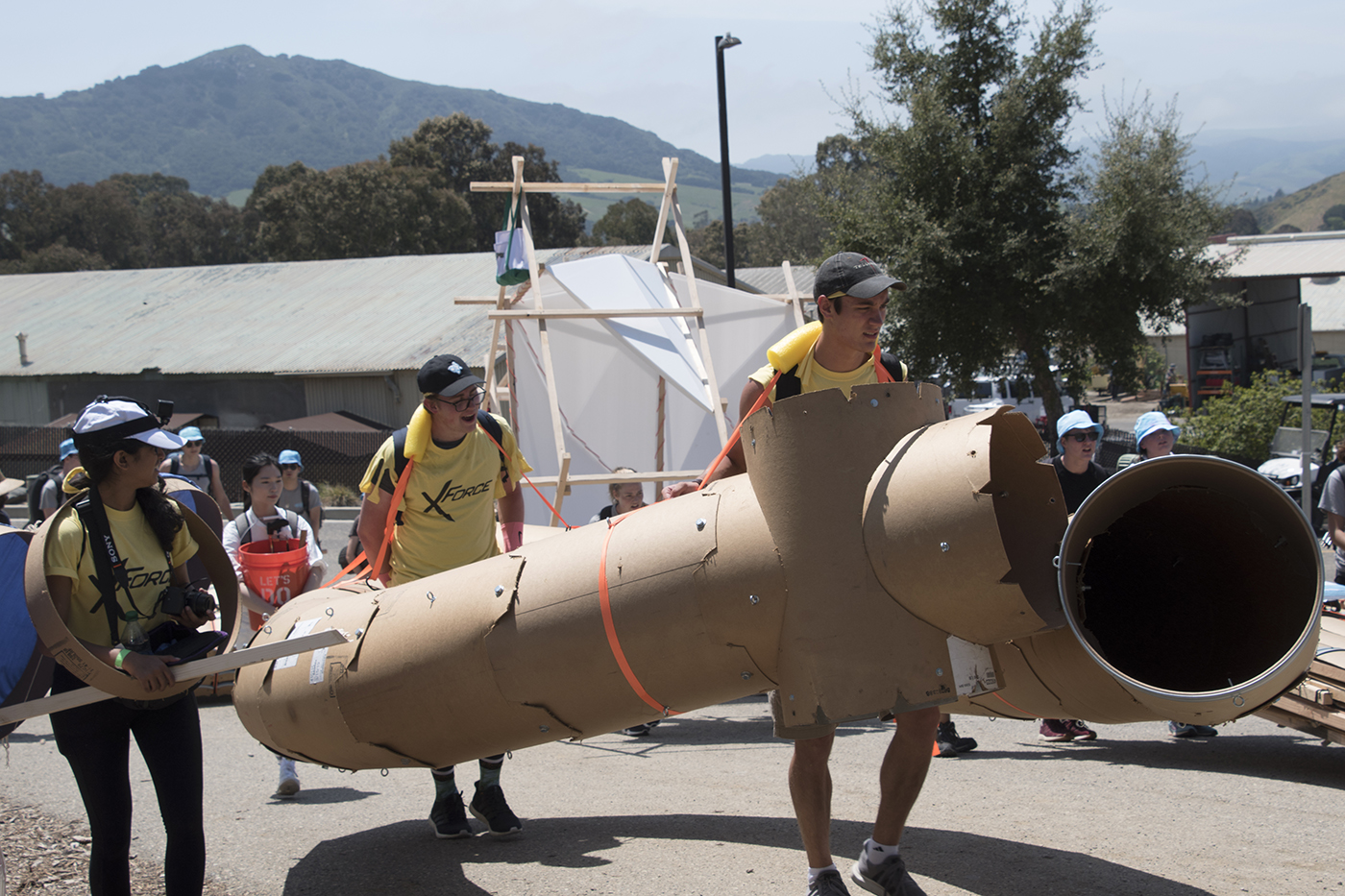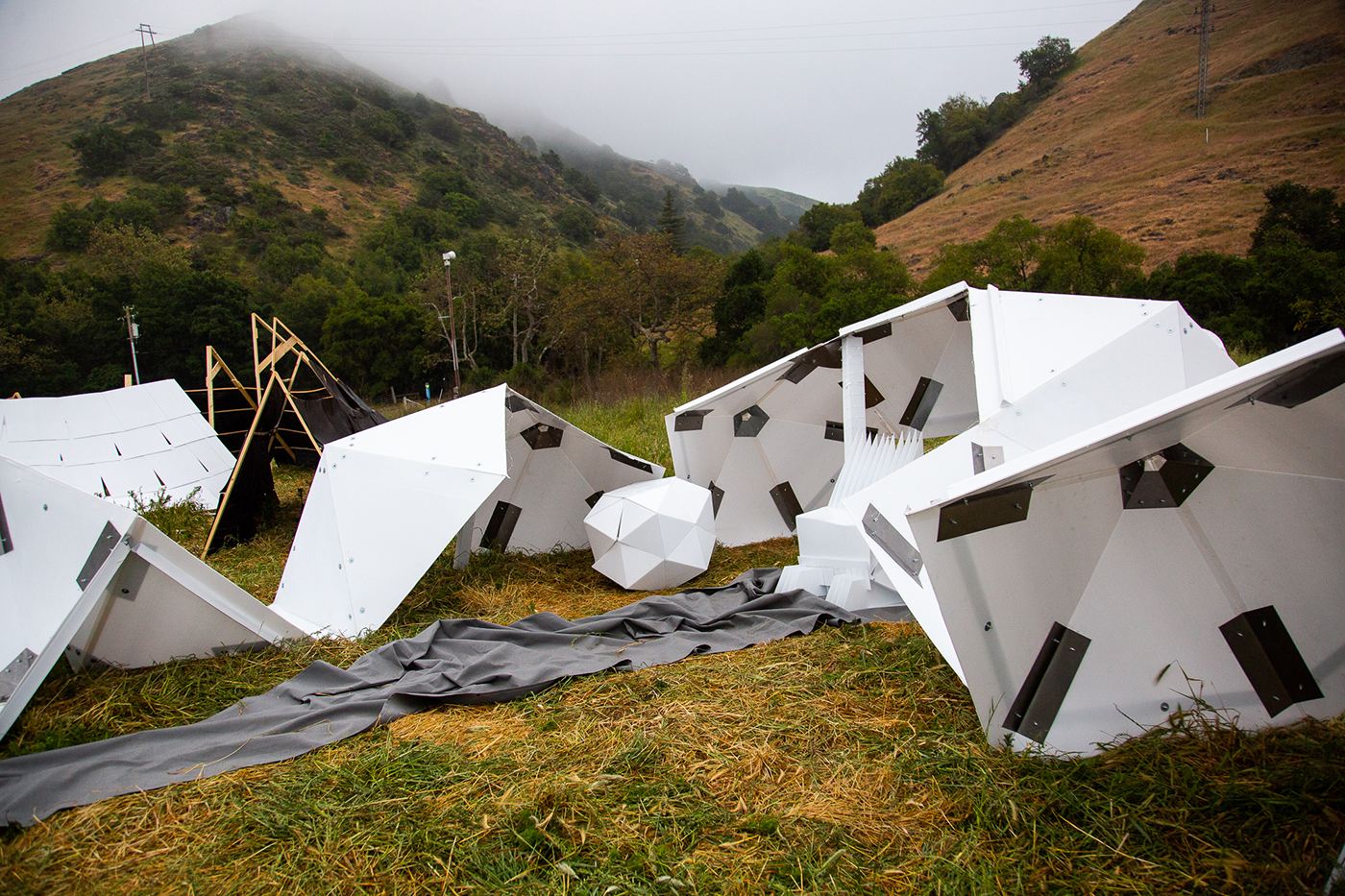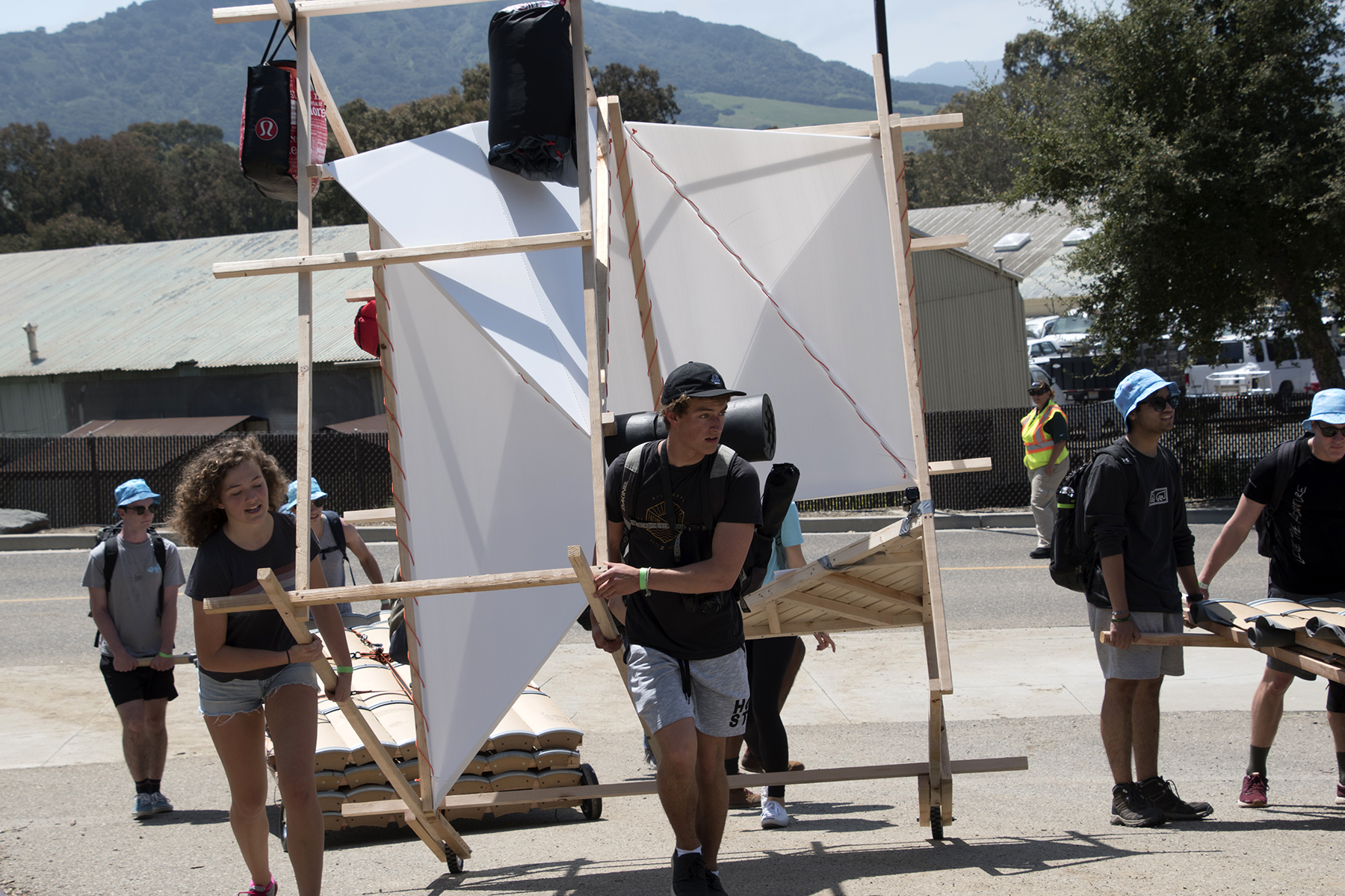Dozens of students gathered outside of Architecture and Environmental Design (building 5), using wire to adjust wood-and-metal structures that were bound for the annual Architecture Design Village in Poly Canyon. The structures were tall, extending above their heads. But the first thing a stranger would notice is the strong scent of garlic.
The recycled wood used in one of those structures had previously been used to transport containers of garlic powder. The students may have put the wood to a brand new use, but its old aroma lingered.
“Yeah, you can really smell the garlic,” acknowledged architecture professor Emily White, explaining that the recycled wood was part of a focus on sustainability in this year’s designs.
Nearly 400 students from 14 schools throughout California fused sustainability into their designs for this year’s competition April 26-28. The event is held every spring in Poly Canyon Design Village, more commonly known as “Architecture Graveyard,” and offers architecture and architectural engineering freshmen a chance to design and construct structures that align with a specific theme — this year’s theme being “Synthesis.”

Every team was challenged to create a structure that integrates into the natural environment and appeals to one of the five senses, according to a Cal Poly press release.
“Everything you see here will have a second life either in future studio projects or then some of the projects will go to a live local music festival, and some of them will be repurposed for next year,” White said.
Not only does each project have a plan for reuse, but some of the materials already have another use. For example, the teams are using massive cardboard containers that once held garlic powder. The teams also used thinner wood planks and thinner rods to minimize the amount of material used in each structure.
“We approach sustainability in both the quantity of material used in its embodied energy and also it must have a plan for its second and third and fourth lives beyond,” White said.

Each studio class went about beginning the design process in different ways. For architecture freshman Annabella Che, her studio focused on brainstorming different design ideas rather than immediately forming teams.
“We were given time to experiment with different shapes, and we were actually assigned specific shapes that would be created with tension and fabric,” Che said.
From there, design ideas were pitched and groups were formed around the three best design ideas. According to White, after the initial sketches and designs, the teams each built models that were approximately one-twelfth of the real structures’ size.
“Design Village introduces first-year students to making things at large scale by working with both hand and mind,” Dale Clifford, a Cal Poly architecture faculty member, said in a press release. “Really, Design Village is about knowledge building through design consensus as each team is composed of a diverse student population.
According to White, in the past the project has lasted anywhere from one to three weeks. This year’s project was the first to last four weeks.

After designing, experimenting and building their structures, the students still had the task of transporting all of their materials up to the Architecture Graveyard — by foot. On Friday, April 26, each team gathered their design materials and hiked up to rebuild their designs. The teams left at different times throughout the day and spent anywhere from half a day to the whole day putting their designs together.
“The late nights were kinda rough, but that’s the best part,” architecture freshman Jordan Brook said. “And actually seeing it from a computer model, to a mini model, and now it’s this giant real-life thing.”
Part of the designing process involved creating structures they could carry on the hike up Poly Canyon Road either on their backs or by attaching wheels to their designs. Che’s group used bags to carry the smaller pieces of their structure and even strapped some larger pieces across their shoulders for more support.
After a day of reconstructing their designs, the students spent Friday night playing card games, watching movies that they projected on a portable screen, and camping with their teammates under their structures.
For both Jordan and Che, it was the collaboration of their teams and actually bringing their three-dimensional designs to life that made the project so worthwhile.
“It was really nice to be able to set it up and be able to be like, wow, this is something we put together as a group,” Che said. “And now we have an actual structure, standing up, that we can live in for a weekend.”
Tess Rossi, Kaitlyn Hoyer and Stephanie Garibay also contributed to this story.

